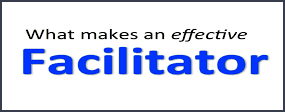The COVID-19 pandemic and ongoing inflation have brought many anxieties and risks to facilities management that have culminated in disruptions to norms. An overwhelming majority of Americans believe that a mental health crisis is currently ongoing (Lopes, Kirzinger, Sparks, Stokes & Brodie, 2022), with no end in sight. Consequences of this mental health crisis expand to affect personal finances, physical health, and emotional wellbeing. Four in ten adults allude to personal finances as the major stress source in their lives (Lopes et. al, 2022). Lower income adults said the pandemic makes it more difficult to achieve financial goals; this has culminated to delaying retirement. Four in ten adults in America can relate to knowing someone that experienced a wage loss since the COVID-19 pandemic (Horowitz, Brown & Minkin, 2021). Those gainfully employed experience salary stagnation and rising inflation.
Inflation has people drastically cut down on spending. The persistence of the COVID-19-assisted inflation makes the Federal Reserve continue to modify the economy. Unanticipated events, such as the invasion of Ukraine, COVID-19 supply chain disruptions, and the automobile/energy price shocks, contribute to the upsurge in inflation.
Facilities projects and operations suffer cost increases and the unavailability of parts, supplies, machinery for rental, human capital, and other project/operational resources. Inflation and supply chain disruptions constantly affect the time, cost, and scope goals of projects. The Federal Reserve continues to attempt to push the unemployment rate higher so as to reduce the inflation rate to 2% by the end of 2024. Ball, Leigh, and Mishra (2022) describe this as substantially reducing inflation through modestly increasing unemployment. The Federal Reserve is ultimately trying to slow down demand in a manner that reduces staff vacancies but does not increase unemployment. “If either the labor market doesn’t behave or expectations don’t behave, the small increase in unemployment the Fed projects won’t be enough.” (Ball et. al, 2022.)
Impact on Facilities Management
The COVID-19 pandemic and the ongoing inflation place an undue burden on the morale, motivation, and expectations of employees in facilities management. The bigger burden now rests on how facilities administrators can improve those areas for their employees. Should this be done through sophisticated types of interpersonal communication to motivate employees and deploy the conceptual frameworks of personality styles? Will doing these improve the impacts of the ongoing mental health crisis, improve morale, improve motivation, improve expectations, and build an effective team? These post-COVID and inflationary times pose unique challenges to facilities leadership and administration, as well as to all cadres of employment.
The question now is how to confront these challenges. This article suggests confronting these challenges by melding leadership theories into unique roles to create and boost the facilities culture of care, consequently building an effective team. Facilities leadership and administration must implement, act, and adjust value to these situations, using the four distinct roles of a mentor, facilitator, manager, and leader. Doing so will help to successfully tailor the right approach for employee effectiveness, motivation, and camaraderie.
Mentorship
 Mentoring involves informal or formal assistance. This assistance, if formally, spans tasks relating to professional development and growth. Mentoring should be offered by someone respected by the employee, offered through modelling the right behavior and assisting employees to identify opportunities professionally in their careers through path delineation, or otherwise fostering a genuine display of personal interest. Personal interest infuses conditions suitable for growth—the culture of care. Showing personal interest facilitates the employee’s professional development and performance. Developing a mentoring relationship through personal interest, especially during these times, will be greatly valued. Mentoring necessitates extreme care and will contribute greatly to the development and improvement of employee performance.
Mentoring involves informal or formal assistance. This assistance, if formally, spans tasks relating to professional development and growth. Mentoring should be offered by someone respected by the employee, offered through modelling the right behavior and assisting employees to identify opportunities professionally in their careers through path delineation, or otherwise fostering a genuine display of personal interest. Personal interest infuses conditions suitable for growth—the culture of care. Showing personal interest facilitates the employee’s professional development and performance. Developing a mentoring relationship through personal interest, especially during these times, will be greatly valued. Mentoring necessitates extreme care and will contribute greatly to the development and improvement of employee performance.
Mentoring actions should also motivate. Mentoring should be targeted to assist in the achievement and identification of lasting professional goals. Supportive, accurate, and candid feedback is necessary to reinforce employee successes while, at the same time, portraying failures as learning and growth opportunities. Thinking out loud with mentees on future or current issues to offer opportunities, resources, possibilities, suggestions, and problem-solving ideas for issues or tasks are also necessitated actions. A sincere personal interest in the welfare of mentees must be demonstrated for their professional growth and emotional stability—the culture of care.
We should act as role models, which entails the demonstration of attitudes, skills, and behaviors that can be imitated to improve morale, motivation, and expectations and to build an effective team. Walking the talk and standing for what you believe increases your strength of moral fiber, which increases the hope for better times. When adopted, it greatly benefits our facilities employees.
Facilitator
 Facilitation is delicate and complex to comprehend. It is an important role for facilities leadership and administrators. Facilitators demonstrate attitudes, mannerisms, and behaviors that assists with getting the job done. Fundamentally, facilitation is accomplished using the skill of influencing others. The facilitator in the facilities culture of care motivates the employee by stimulating their interests and enthusiasm. Facilitators help the employee adopt clear modes of verbal and written communication. Facilitators aid the utilization of clear statements to get to the point. They help by using open-ended methods of questioning to aid limitless responses that elicit sentiments/opinions, provide a wide-ranging set of details, and often deliver unexpected and new insights.
Facilitation is delicate and complex to comprehend. It is an important role for facilities leadership and administrators. Facilitators demonstrate attitudes, mannerisms, and behaviors that assists with getting the job done. Fundamentally, facilitation is accomplished using the skill of influencing others. The facilitator in the facilities culture of care motivates the employee by stimulating their interests and enthusiasm. Facilitators help the employee adopt clear modes of verbal and written communication. Facilitators aid the utilization of clear statements to get to the point. They help by using open-ended methods of questioning to aid limitless responses that elicit sentiments/opinions, provide a wide-ranging set of details, and often deliver unexpected and new insights.
Facilitators contrive and model methods for resolving conflicts. Facilitators give employees authority and boldness to act using their own will and confidence. Facilitators help to proactively acquire necessary resources by demonstrating the disposition to utilize self-confident behaviors to obtain resources the employees need (Flames & Levin, 2005; Gilster, 2002; Northhouse, 2016). This comes with the predisposition to not be liked by stakeholders, but the willingness to be readily available as an important source of security, support, and comfort for our employees. Facilities leadership and administrators, acting as facilitators, provide employees with the conducive environment, opportunities, range for selection, and reliance for the creation of a pursued outcome.
Manager
 The facilities manager in the continuum of care culture builds the infrastructure that lets facilities employees thrive during these times of uncertainties. This role is delivered from the landscape of catering to the challenges of employees by creating the necessary administrative system, with the appropriate configuration to fulfill tasks, without stretching the configuration into an excessive bureaucracy (Flames & Levin, 2005). This administrative system should be balanced between the facilities employees and the structure of the institution, giving facilities employees the needed freedom.
The facilities manager in the continuum of care culture builds the infrastructure that lets facilities employees thrive during these times of uncertainties. This role is delivered from the landscape of catering to the challenges of employees by creating the necessary administrative system, with the appropriate configuration to fulfill tasks, without stretching the configuration into an excessive bureaucracy (Flames & Levin, 2005). This administrative system should be balanced between the facilities employees and the structure of the institution, giving facilities employees the needed freedom.
The manager provides a clear source of direction, at the same time apportioning opportunities for employees to define paths to complete tasks. The manager ascertains that procedures and processes are stated clearly, delineating performance and behavioral expectations as guidelines instead of severe rules to be obeyed as a dogma. This manager infuses focus, purpose, and opportunities, creating a balance for well-being and a healthy employee experience. This is investing in the well-being of employees as an impactful means for the culture of care, offering support, tools, and the safe space needed to navigate and manage anxiety.
This manager engages in the conversations about establishing and implementing controls the infrastructure needs to thrive. These conversations should consider the needs of employees and identify the flexibilities available to help employees, meet those needs. Implementing this infrastructure may be riddled with personality issues that emanate from personality styles and may consequently result in the tendency for excessive control (micromanagement) or to very little control. Both exhibit their own nuances.
The micromanager strives for order and excessive structure (Flames & Levin, 2005), delivers excessive supervision by homing in on performance, which consequently creates hostility and morale diminution (Kagan & Perez, 2021). These do not help employees thrive. Micromanagement is met with anger, frustrations, irritation, motivation loss, and a feeling of being undervalued. This presents the important reason the manager needs to solicit employee feedback about perceptions of the infrastructure and control, giving employees the flexibility and autonomy to follow their own path.
Leader

Central to ameliorating the burden to improve motivation and expectations of employees in facilities management and operations, the leader should inspire employees through shared goals. The facilities leader in this culture of care continuum develops a relationship of shared goals, through the ability to influence the effectiveness of facilities employees in a shared direction (Northhouse, 2016). Burdens and aspirations of employees are gathered to create a sense of destination for effectiveness, motivation, and camaraderie.
The facilities leader, through authentic leadership, creates a sense of value for building and utilizing caring principles as a force that unites employees for a successful coordination of work efforts for communal benefits. The leader employs service, passion, inclusion, vision, commitment, and self-knowledge (Gilster, 2002). This leader employs caring principles to focus on employee needs, encouraging them to adjust by combatting and solving challenges. This leader contrives and focuses on group processes, centering on group activities for group change, embodying the will of the group. The role of this leader is neither linear nor a one-way event, but an interactive event, a transactional occurrence between this leader and the employees (Northhouse, 2016). The leader concerns themselves with influencing and positively affecting employees for a common purpose.
This leader is attentive to these common goals and provides an ethical foundation to achieve those precise goals. Emphasis on mutuality diminishes the propensity for unethical conduct, increasing the tendency to work together for a common goal. This leader should always initiate the rapport to build an effective team and boost the culture of care by creating communication connections and carrying the burden for maintaining rapport. The leader has an ethical responsibility to cater to the needs and concerns of employees.
Conclusion
Restoration, post disruptions, to the norm is needed in facilities management. These neatly organized set of prescriptions can help facilities administrators restore normalcy, improve morale, improve motivation, improve expectations, and build an effective team after the COVID-19 pandemic and ongoing inflation. This framework will help navigate facilities administration in a broad spectrum ways, incorporating the relationship and responsibility dimensions. The approach reminds facilities administrators of the need to nurture and support facilities employees by evaluating our own behaviors to determine how we come across and the need to play the role of a leader, manager, mentor, or facilitator to be more effective. The result is a culture of care that serve the facilities staff in their support of the institution’s mission and vision.
References
Ball, L., D. Leigh, and P. Mishra. (2022). “Understanding US Inflation during the COVID Era.” Retrieved from https://www.brookings.edu/bpea-articles/understanding-u-s-inflation-during-the-covid-era/.
Flames, W.S., and G. Levin. (2005). Essential People Skills for Project Managers. Vienna, VA: Management Concepts.
Gilster, S.D. (2002). “Leadership: Key to Creating a Caring Culture.” American Journal of Alzheimer’s Disease, 17(4), 232-236. doi:10.1177/153331750201700408.
Horowitz, J.M., A. Brown, and R. Minkin. (2021). “A Year into the Pandemic, Long Term Financial Impact Weighs Heavily on Many Americans.” Pew Research Center. Retrieved from https://www.pewresearch.org/social-trends/2021/03/05/a-year-into-the-pandemic-long-term-financial-impact-weighs-heavily-on-many-americans/#:~:text=concern%20about%20finances-,About%20four%2Din%2Dten%20Americans%20(42%25)%20say%20they,say%20their%20spending%20has%20increased.
Kagan, J., and Y. Perez. (2021). “What is a Micromanager? Impact, Signs, and Ways to Reform.” Retrieved from https://www.investopedia.com/terms/m/micro-manager.asp#:~:text=A%20micromanager%20is%20a%20boss,the%20employee’s%20work%20and%20processes.
Lopes, L., A. Kirzinger, G. Sparks, M. Stokes, and M. Brodie. (2022). KFF/CNN Mental Health in America Survey. Retrieved from https://www.kff.org/report-section/kff-cnn-mental-health-in-america-survey-findings/.
Northhouse, P.G. (2016). Leadership: Theory and Practice. Thousand Oaks, CA. Sage Publications.
Picture References
Cleveland State University Professional Development Center. Retrieved from https://business.csuohio.edu/professional-development-center/leadership.
Dolan, C. (2022). 5 Leadership Tips from The Plank Center’s 2021 Milestones in Mentoring Honorees. Retrieved from http://plankcenter.ua.edu/5-leadership-tips-from-the-plank-centers-2021-milestones-in-mentoring-honorees/.
Gospe, M. (2016). What makes an Effective Facilitator. Retrieved from https://www.kickstartall.com/9-characteristics-of-a-good-facilitator/.
The Social Workplace. Retrieved from https://thesocialworkplace.com/2019/06/three-steps-to-manager-led-employee-engagement/.
Ayo Akinola is executive director of facilities design, construction, operations, capital planning, and auxiliary service at Truckee Meadows Community College, Reno, NV. He can be reached at [email protected].



